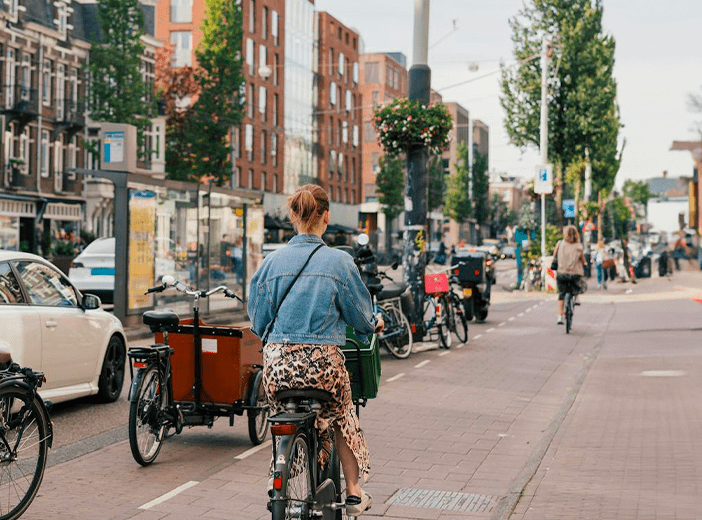What is a Smart City? A Comprehensive Introduction
Across the globe cities and municipalities are transforming themselves into smart cities, improving the urban environment for citizens, visitors, and businesses, while boosting efficiency and sustainability. In this blog we explain what a smart city is and how to build one successfully.

While the smart city concept is not new, it is being adopted increasingly around the world, from futuristic new settlements such as Neom in Saudi Arabia to projects to transform existing cities – and towns – across North America and Europe. However, the concept means different things to different people. What precisely is a smart city?
What is a Smart City?
The context for urban data exchange growth
We live in an increasingly urban world, putting pressure on the existing structures of cities and towns, through congestion, air pollution and poor access to services. At the same time city leaders need to meet the changing needs of their stakeholders, while preserving and optimizing their resources and delivering on sustainability goals. Data backs this up:
- Currently, 55% of the world’s population lives in cities. In 2050, this figure will grow to 68%, according to the United Nations
- The University of Michigan estimates that 83% of the U.S. population lives in urban areas, rising to 89% by 2050
Cities, towns and metropolitan areas all therefore need to transform themselves to deliver a seamless experience to citizens that builds strong, inclusive communities, become more efficient and innovative, and in particula
Based on this need, our smart city definition is, “A city or municipality that uses information and communication technology (ICT) to improve operational efficiency, share information with the public and provide a better quality of government service and citizen welfare.”
This urban data exchange concept is nothing new. For example, Asian megacities such as Singapore have been deploying advanced technology for over 50 years. The Supertrees project in Singapore installed 160 foot tall solar-powered artificial trees in its new city gardens. These provide large canopies and operate as temperature moderators, deliver lighting, and collect rainwater.r ensure that they are more sustainable. Smart city solutions are designed to deliver on all of these objectives.
Concretely, what is the Smart City?
Based on this need, our smart city definition is, “A city or municipality that uses information and communication technology (ICT) to improve operational efficiency, share information with the public and provide a better quality of government service and citizen welfare.”
This smart city concept is nothing new. For example, Asian megacities such as Singapore have been deploying advanced technology for over 50 years. The Supertrees project in Singapore installed 160 foot tall solar-powered artificial trees in its new city gardens. These provide large canopies and operate as temperature moderators, deliver lighting, and collect rainwater.

However, different organizations describe smart cities in different ways, and the concept itself has changed over the last half century, going through three specific phases:
- Smart City 1.0 was led by technology providers. Projects didn’t focus on the needs of the city or citizens, but instead showcased the possibilities that the latest technology provided.
- Smart City 2.0 was led by and controlled by cities. While programs met the needs of municipalities and increased efficiency, they didn’t necessarily take into account the requirements of citizens and businesses.
- Smart City 3.0 is not solely controlled by either city leaders or technology providers. Instead, it revolves around a citizen co-creation model that ensures that smart services meet the requirements of residents. For example, Vancouver involved 30,000 of its citizens in the co-creation of the Vancouver Greenest City 2020 Action Plan.
Urban data exchange benefits
Smart cities brings together benefits for citizens, cities and the wider community in a collaborative, iterative and ongoing process, as these three examples show:
- Increased efficiency. The City of Long Beach shares information on 311 service requests through an interactive smart city map, displaying current incidents, such as graffiti and litter. This removes the need for people to call for updates, reducing costs and freeing up city staff for other work.

- Reduced risk. Cary in North Carolina is prone to flooding due to stormwater surges. To provide an early warning system and to predict flooding it has installed Internet of Things (IoT) water sensors and rain gauges, which send alerts when levels hit a certain threshold.
- Improved services for citizens. The Town of Morrisville’s innovative Connected Parks project has installed ground moisture sensors within its soccer pitches. If the pitch is too wet to play, this data triggers an automatic closure of the park gates and sends messages to those registered to use the pitches, canceling their session.

The characteristics of a Smart City
The fundamentals of a Smart City
Successful urban data exchange initiatives rely on three core fundamentals – technology, culture and collaboration.
Smart city technology
The intelligent city is powered by data, meaning it needs to be collected, analyzed and shared effectively. The smart city technology stack requires:
- A comprehensive 4G/5G communications network
- Real-time Internet of Things (IoT) sensors, deployed to collect a range of data, from air quality and traffic volumes to energy usage and water levels
- Open standards for data, that mean they can be easily shared internally and externally, while respecting confidentiality
- Access to data stored on internal business systems and from external partners (such as transport and mobility providers or utilities)
- A central data portal that stores, standardizes and makes data available to all internal and external stakeholders
- Ways of analyzing/using this data (such as AI, digital twins, and automation), enabling effective action to be taken
- User friendly interfaces to deliver information to citizens, businesses and staff, such as data visualizations, dashboards, digital signage, or apps
An open, innovative smart city culture
Cities now have access to more and more data – what makes them smart is using this information effectively to meet their needs, and the requirements of their stakeholders. That requires cities to adopt an open, data-driven culture that breaks down barriers between departments and ensures everyone is confident in discovering, accessing and using data in their daily roles. This enables innovation and new use cases for data.
Wide ranging collaboration across the smart city ecosystem
The most innovative urban data exchange project will fail if it does not meet a need or is missing vital information. Cities therefore need to collaborate with their audiences (residents, businesses, visitors) and potential partners who may benefit from their data or be able to offer relevant information. For example, bringing together data from transport operators, smart traffic lights and parking providers can monitor traffic flows, provide end-to-end mobility and direct drivers to the nearest free parking space. As part of this collaboration, cities need to listen to the requirements of their citizens, and engage them in the smart city process. That means overcoming any potential concerns about privacy or how their data will be used upfront to get their buy-in.
The importance of data portals to the Smart City
Effectively collecting, combining, analyzing and sharing data underpins smart city success. Data should flow seamlessly across the city, in real-time, ensuring that everyone can access and use it, whatever their requirements. However, keeping track of data and using it effectively can be difficult. Volumes are continually growing, the velocity of data creation is ever-increasing and the variety of sources is expanding. Data may be stored in different systems and departments, making it difficult to find or use with confidence.
Centralized, self-service data portals provide the engine for smart cities by bringing data assets together and making them easily available to everyone, internally and externally, whatever their level of data skills. They connect to all sources and apply data governance rules to ensure consistency, quality and reliability, all while protecting confidentiality. For example, a data specialist can download raw data, a mobility app provider can access data through APIs, citizens can view visualizations, maps or data stories, while internal staff can look at internal dashboards, with access based on their role.
As the importance of smart cities grows, every community needs to embrace technology to become smarter and more intelligent. Creating intuitive, centralized data portals is therefore a key foundation for every successful smart city.





